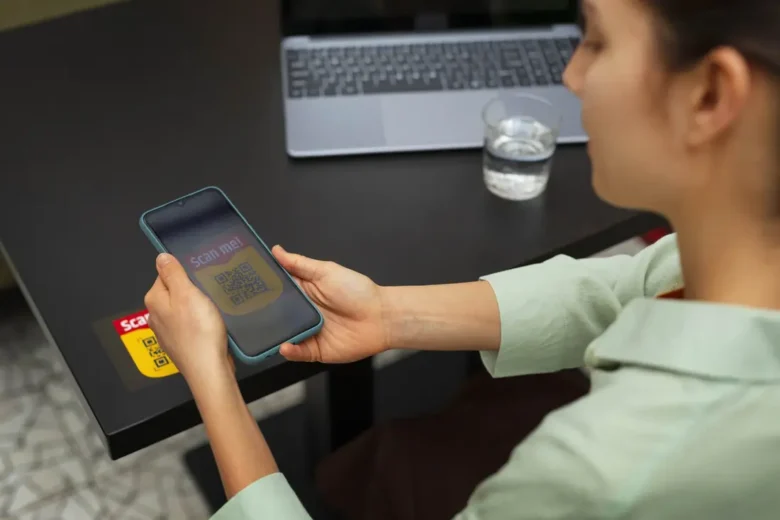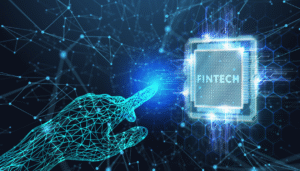The fintech landscape is undergoing a profound transformation as biometric payment systems change the way consumers handle money. Biometric payments, which use unique biometric identifiers to authenticate transactions instead of relying on traditional payment methods like debit cards or PINs, create a seamless connection between digital commerce and identity. This development represents a radical rethinking of the user experience and financial security, going beyond mere technological advancements. Biometric technology can meet consumer demand for faster, more secure, and more convenient payment methods while eliminating the challenges associated with traditional payment methods.
The integration of biometric payments into fintech platforms is a revolution that has the potential to completely transform the financial industry, not just improve it. Because biometric payments offer an ideal balance of security, convenience, and innovation, financial institutions and fintech companies are rushing to implement these systems. This technological revolution is fundamentally changing consumer expectations regarding the payment experience and simultaneously opening up new business opportunities.
Understanding Biometric Payments:
Biometric payments use unique behavioral or physical characteristics to confirm users’ identities and authorize financial transactions. To generate a digital template that serves as a secure authentication key, these systems collect and analyze biometric information such as voice patterns, iris scans, fingerprints, and facial features. When a user makes a payment, the system compares their real-time biometric data with a pre-stored template. Access is granted only if a match is verified. This process takes only milliseconds and provides strong security and a seamless user experience. The technology uses complex algorithms to distinguish between genuine biometrics and potential fraud. A single algorithm can detect authenticity and prevent spoofing attacks using images or audio recordings.
The Need for Secure Payments and the Development of Fintech:
With the explosive growth of digital financial services, the need for payment security solutions that keep pace with innovation is greater than ever. Traditional authentication technologies often involve multiple steps, diminishing the customer experience and making it difficult to balance security and convenience. While card payments are increasingly facing sophisticated fraud, password-based systems are also vulnerable. Fintech companies recognize that sustainable expansion requires payment solutions that offer bank-grade security without sacrificing the seamless user experience that characterizes successful digital platforms. The COVID-19 pandemic has fueled this demand, making contactless payments crucial for health and well-being. Businesses must now find ways to eliminate physical contact without compromising transaction security. The significant shift in consumer behavior toward digital financial interactions is putting significant pressure on the market to adapt to this new reality.
Types of Biometric Payment Methods:
Fingerprint recognition technology is at the forefront of the biometric payment revolution, thanks to the widespread use of fingerprint sensors in smartphones and payment terminals. By capturing the unique ridge pattern of each fingerprint, this technology generates a mathematical representation that serves as a secure authentication key. Facial recognition technology is also gaining popularity, thanks to the use of advanced matching algorithms and sophisticated camera systems.
To generate a unique voiceprint for payment authentication, speech recognition algorithms examine voice characteristics such as pitch, intonation, and speech patterns. The most secure biometric technology is iris scanning, which utilizes the complex patterns in the colored part of the human eye, which remain unchanged throughout life. Palm vein recognition, which uses near-infrared light to analyze the unique vein pattern under the skin, is becoming a viable contactless option. Each method offers unique advantages in terms of security, ease of use, and installation cost, allowing businesses to choose the solution that best suits their specific needs and customer preferences.
Benefits of Biometric Payments:
The primary benefit of biometric payment systems is enhanced security, as biometrics, unlike standard data, are difficult to copy or steal. By eliminating physical cards, PINs, and passwords, users enjoy unprecedented convenience, reducing transaction time and mental strain. Because biometric fraud requires sophisticated methods beyond the reach of ordinary fraudsters, the technology offers stronger fraud prevention capabilities. A simplified, instant, and natural authentication process significantly enhances the customer experience.
Because biometric solutions eliminate the need for fraud investigations, card replacements, and password resets, businesses can save on operational costs. Because biometric authentication accommodates various physical limitations, it also provides a comfortable payment experience for people with disabilities who struggle to use traditional input methods. The technology also promotes financial inclusion by providing secure payment channels to underserved groups who may lack traditional identification data but do have unique biometric characteristics.
Obstacles and Considerations:
The biggest obstacle to the adoption of biometric payments is privacy concerns, as users worry about the storage and potential exploitation of their biometric data. The system’s accuracy can be affected by technical limitations; false positives can lead to unauthorized access, while false negatives can restrict authorized users. Because biometric payments require specialized hardware, software, and ongoing maintenance, implementation costs for businesses remain high. Compliance challenges arise from varying regulations worldwide regarding the use and security of biometric data.
Cultural acceptance varies significantly by ethnicity and geographic region, and some social groups are reluctant to disclose biometric information. The permanence of biometric data raises questions about the system’s reliability, as compromised biometric templates, unlike passwords, pose a long-term security risk. The complexity of integration increases as businesses attempt to integrate biometric technology into their existing payment infrastructure without disrupting ongoing business operations.
The Future of Biometric Payments in Fintech:
The next step is multimodal biometric systems, which combine multiple biometric functions to make authentication procedures more accurate and secure. System functionality will be further enhanced by the integration of artificial intelligence, enabling adaptive security measures that learn from user behavior patterns and perform real-time fraud detection. Blockchain technology has the potential to alleviate privacy concerns through the development of decentralized storage systems that allow users to manage their biometric data while ensuring security.
The integration of wearables will expand the possibilities for biometric payments beyond smartphones, adding smartwatches, fitness trackers, and even clothing to the payments ecosystem. Collaboration between industries will fuel standardization initiatives, leading to interoperable systems that work seamlessly across platforms and service providers. The ultimate goal is continuous authentication, verifying users during digital transactions without the need for re-authentication, creating a truly seamless banking experience.
Conclusion:
Biometric payments mark a turning point in the evolution of fintech, combining innovation, convenience, and security to unlock unprecedented opportunities for consumers and businesses. This technology opens up new possibilities for financial inclusion and enhanced user experience, while simultaneously addressing the key challenges of digital payments. Biometric payments will become the cornerstone of the next generation of financial services, prioritizing security and convenience as implementation costs decrease and user adoption increases.
This revolution aims to rethink how people interact with the financial system in an increasingly digital world, not simply replace existing payment methods. Companies using biometric payment technology today are at the forefront of shaping the future of fintech. The question is not whether biometric payments will transform the financial industry, but how quickly companies will adapt to this new reality and leverage it to gain a competitive advantage.
FAQs:
1. Are biometric payments more secure than traditional payments?
Because each person’s biometrics are unique and difficult to copy or steal, biometric payments offer a higher level of security. Unlike passwords or cards, which can be shared or compromised, biometric data offers inherent security because it is linked to your physical identity.
2. What happens if my biometric data is stolen or compromised?
Modern biometric systems store mathematical templates, not actual biometric images, making the data unusable if stolen. However, because biometrics cannot be changed, unlike passwords, the consequences of a data breach are more severe than with standard login credentials.
3. Can people with physical limitations or disabilities use biometric payment systems?
Yes, biometric systems offer multiple authentication methods to accommodate different disabilities. To ensure equal access to secure payments, people with visual impairments can use voice recognition, while those without fingerprints can use facial recognition.
4. Are biometric payments compatible with all types of environments and lighting conditions?
While performance can vary, most biometric devices are designed to work in a variety of environments. Fingerprint sensors use advanced imaging technology, making them effective in most situations, while facial recognition systems use infrared technology in low-light conditions.
5. Will all traditional payment methods eventually be replaced by biometrics?
While biometric payments are developing rapidly, it is uncertain whether they will completely replace them shortly. This technology will likely coexist with traditional payment methods, giving users more options and eventually becoming dominant in most transactions.




